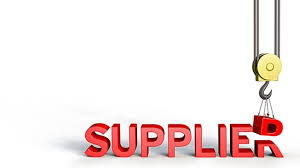Supplier Development (ISO 9001 / IATF 16949)

Happy suppliers lead to happy customers, which leads to more profit – unknown
Parents provide the best facilities to their child so that they can become a good human being and responsible citizen by the time they become adult. Birds and animals nurture their offspring until the time they become self-sufficient to feed and protect themselves. A management trainee is provided intense training for initial few years so that they can become a useful resource for their organization. Something similar is expected from the organization for their active suppliers.
Supplier development is important for the sustained and enhanced success of the organization and their customers and aligning the suppliers with organizations business needs. The kind of suppliers for development could be the best suppliers or weakest suppliers.
The requirement can be minor or major like overhauling for launching new product categories or entering a new business area which demands up-gradation (shifting from 2-wheeler to 4-wheeler customer or shifting from manufacturing to Customer service process like recruitment).
Before going ahead with the supplier development process, it is important to understand the key reasons ‘why’ organizations want to develop their suppliers. Some of them could be
- Reducing Costing
- Resolving serious quality and delivery issues
- Reducing COPQ (Cost of Poor Quality)
- To manage financially troubled suppliers
- To bridge any shortcoming of third-party certification!
- To fulfil Customer Specific Requirements
- Where a new business has to be awarded
- High-risk suppliers like Share of Business, type of product (Safety, Legal compliance etc.)
- Where an organization wants to keep long term relationship
- Boosting the morale of the customer on their sub-suppliers
Expectation (output) from the process of supplier development:
Supplier development intends to establish the controls for external providers, for the organization to have confidence that the products and services to be provided will consistently meet the requirements. There is no single formula which can fit the requirement of supplier development. It will vary depending upon the expectation of the organization, size of the supplier, their speed & competency, different market conditions like in a BPO (Business Process Outsourcing) or in the textile sector, where the approach will be different. Ultimately, it should result in quantifiable business results which can fulfil the needs and expectations of the organization.
Before supplier development, both the partners must be willing to work together and change themselves and desire to achieve the set objectives. Key personnel from both the team should be empowered to decide as supplier development is nothing but change management process. A defined timeframe has to be decided between both parties for the completion of the project. The competency of the personnel responsible for supplier development is equally important like interpersonal skill to persuade the suppliers where needed.
As per ISO 9000: 2015, there are few definitions related to Supplier (External provider).
Provider (Supplier- Clause 3.2.5):
An organization that provides a product or a service. Example: A provider can be internal or external to the organization.
External Provider (External Supplier- Clause 3.2.6):
A provider that is not part of the organization
Performance– Clause 3.7.8):
Measurable result (it can be qualitative or quantitative)
Once an organization is clear ‘why’ they want to develop supplier, the next important step will be the criteria for deciding the supplier. Some of the key criteria could be
- Result of supplier audit (System, Process, Product)
- Not certified to ISO 9001/IATF 16949; Major nonconformity received during third party audit
- A supplier who is a risk for the organization but can help the organization to enhance its sustained success
- Risk analysis
- Where organization and supplier are interdependent
- Delivery issues
- Logistics issues
- Commercial issues
- Inadequate technical competency
- Technology gap
- Poor customer service
- Part complexity
- Inadequate Change Management
- High volume of business
- Poor Business Continuity Management
- Inadequate resources
- Previous history of Chronic performance
- Sporadic issues
- Capability / Capacity issue
- Market Competition
Possible action for supplier development:
Based on the criteria, once the suppliers are identified, the next logical action will be the possible steps to develop the supplier as per organizations needs and expectations. The steps are defined in the form of a PDCA cycle.
Plan
- Ensure the involvement and commitment of Top Management of both parties
- Prepare team at both ends considering their competency
- Prepare a strategy about the tangible outputs, what the organization expects from the suppliers (within a time frame) based on their existing performance like rejection, warranty, line stoppage using Pareto analysis.
- Define performance review frequency
- Ensure that product/service requirements are complete, clear and address any potential sources of ambiguity or confusion and both parties should agree to what is required. All the relevant details are clearly stated like drawings, technical specifications, response time, delivery date and place, value engineering plan etc.
- Competence requirements from the external provider are clearly defined like a certified welder, a qualified internal auditor etc.
- Minimum ISO 9001 or IATF 16949 certification (automotive supply chain) / For Laboratory and Calibration agency, certified by ISO 17025
- Where possible, prepare supplier cluster for sharing good practices
- Identify all possible key issues like die/fixture maintenance, chronic issues, competent manpower shortage, Labour issues, lack of resources etc.
- Review the performance of sub-supplier if needed
Do
- Organization to share their mission, vision, values and culture and provide any necessary support for better understanding
- Visit the supplier end and conduct gap analysis
- Based on gap analysis, provide them training (complementary or at subsidized rates)
- Do defect mapping / when slippage to the organization / what are the existing controls / where is it loose / how to improve it like quality gate improvement/competency gap & improvement/ line layout / 5S / focused tagging / identifying 7 sources of abnormalities and closing / verifying their effectiveness of internal audit / identifying their New Product Development team & their competency / how much effective they are / their sub-supplier selection process / check the effectiveness etc.
- Help them in value engineering activities so that cost-cutting activities can be done
- Wherever possible, help the suppliers to implement CQI tools depending upon the type of operations they are conducting like
- CQI 9 (Heat Treatment)
- CQI 11 (Plating)
- CQI 12 (Coating)
- CQI 15 (Welding)
- CQI 17 (Soldering)
- CQI 23 (Moulding)
- CQI 27 (Casting)
- Train and implement Customer Specific Requirement of the organization and their customer. Example: Maruti Suzuki Tier II Supplier manual.
- Ensure effective understanding and implementation of core tools in the automotive supply chain like APQP, PPAP, FMEA, SPC, MSA
- Arrange Supplier cluster meet (if planned) to share best practices
- Share best practices of similar type of suppliers
- Share common problems in similar industries and how to overcome them
- Where needed, involve a certification body for effective compliance
Check
- Review the planned action plan with top management as per the defined frequency and whether they are achieved or not
- Conduct System audit, Manufacturing Process audit and Product audit to check the effectiveness of implemented actions
- Review their action plan related to different audits and give feedback
- Status of ISO 9001 / IATF 16949 / ISO 17025 certification and its effectiveness
Act
- If the proposed actions are not implemented effectively, train them again. There should be an escalation process. If that also does not work, it should result in the re-sourcing of the supplier (wherever needed)
- Review the supplier development process and modify where needed
How to assess the effectiveness of supplier development:
- Improvement in performance (Quality, Delivery, Cost)
- Enhancement in the competency
- Implementation of best practices
- Value Engineering projects initiated
- Upgrading of existing sub-suppliers
- Improvement in economic efficiency
- Sustained success
- Continual improvement activities initiated
Example:
Customer: Automotive Tier 1 (Approved by OEM)
Work: Electroplating and Powder Coating
System: Certified to ISO 9001: 2015 from an unknown third-party certification body
Improvement activity: Not implemented CQI 11 (Plating)
Performance: Regular complaints related to Visual, peel off and component packaging
Key criteria for Supplier Development?
- ISO 9001 Certified by unknown CB
- Not certified for IATF 16949
- Not implemented CQI 11
- Sporadic complaints related to Quality
Possible action for development:
- Involve top management and get their commitment to improvement
- Convince the supplier to certify from a known certification body
- Give training and implement CQI 11
- Make a small team for analyzing repeated complaints and take action on top 2 complaints
- Strengthen Quality Gate
- Arrange a visit to suppliers of a similar product to understand best practices
- Conduct effective internal system, process and product audit
Challenges:
- How often the organization is committed to continuing supplier development until desired results are obtained.
- How many top managements reviews the performance of supplier development in management review?
- How often organization utilize a systematic method to identify appropriate supplier where real improvement is needed?
- How often organization ensure that competent manpower is responsible for the leading supplier development process
References:
ISO 9001: 2015
ISO/TS 9002: 2016
ISO 9004: 2018
IATF 16949: 2016
ISO 17025: 2017
CQI: Continuous Quality Improvement
CQI-19 Sub-Tier Supplier Management Process Guideline
This is the 54th article of this Quality Management series. Every weekend, you will find useful information that will make your Management System journey Productive. Please share it with your colleagues too.
Your genuine feedback and response are extremely valuable. Please suggest topics for the coming weeks.

Very good presentation and useful.
Thanks
Practical and thorough approach
Good
Thanks Mr Gupta